Goldfish Lanterns: The Craftsmanship Behind Auspicious Chinese Lanterns
Chinese fish lanterns, a luminous art form blending traditional folk culture with artistic beauty, take fish as their central motif, symbolizing auspiciousness and prosperity. Widely featured in festivals, folk events, and artistic decorations, these lanterns create dazzling spectacles.
On a night shortly before the Spring Festival at a commercial area near Chengdu’s Wuhou Temple, colossal lanterns shaped like fighting fish and carp stood resplendent in vibrant colors on the plaza, while dozens of simpler fish lanterns hung overhead, resembling a school of fish swimming through the night sky. This stunning display drew countless visitors who gathered to admire and savor the wonderful moment crafted by this intangible cultural heritage craftsmanship.
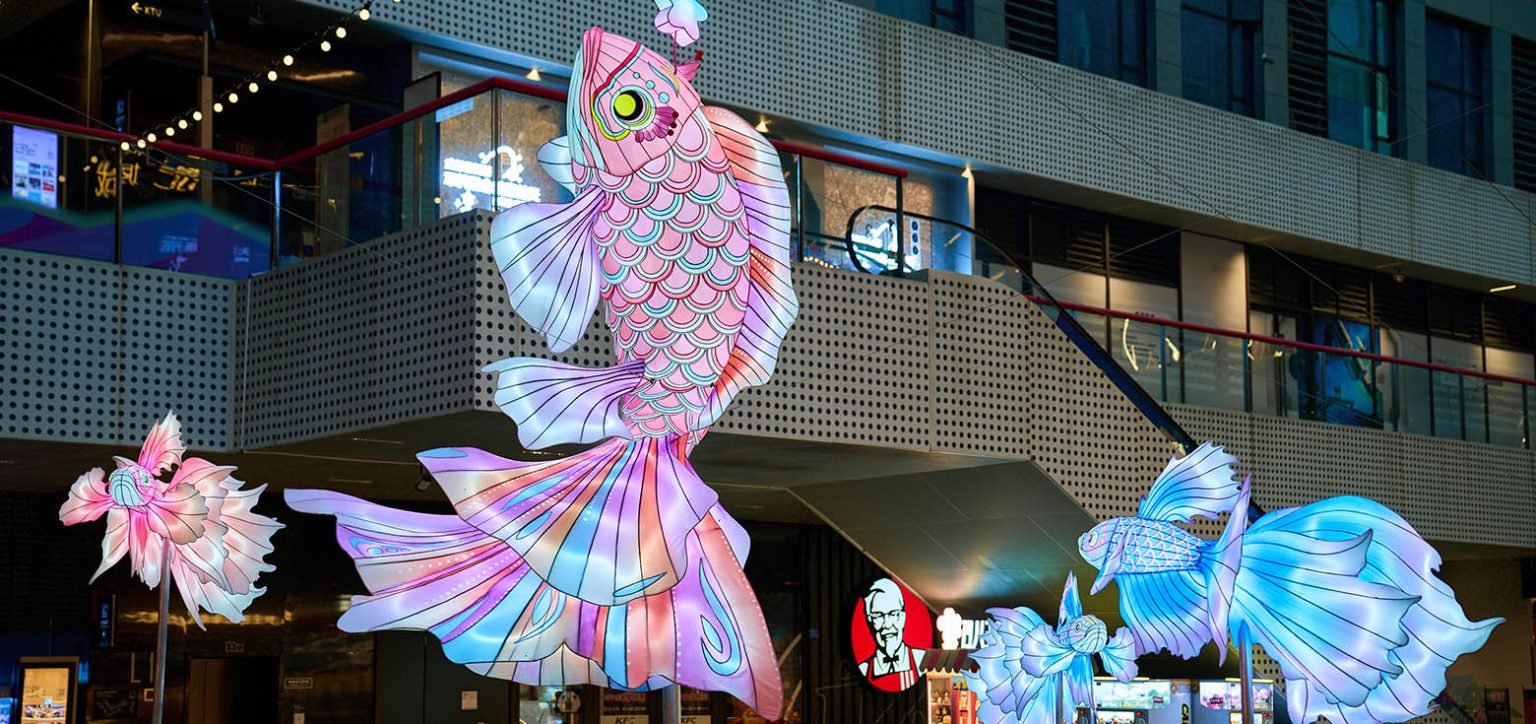
In ancient China,every time the festival comes, people usually light up traditional Chinese lanterns to celebrate festivals, to pray the weather will be good and the grain will be abundant in the coming year. Such as people will gather together to light up large sky floating lanterns for praying, you can also put a China sky lantern for each person, make your own good wishes,You can also shuttle in the busy streets with your good friends carrying fish lanterns to feel the festive atmosphere, and ordinary people will light a red lantern in front of the door to ward off evil spirits and avoid disasters.
Fish, as aquatic creatures with strong reproductive capabilities and vigorous vitality, have been endowed with auspicious meanings such as “abundance every year” and “wealth and prosperity.” Thus, the tradition of crafting fish lanterns for Chinese New Year, Lantern Festival, and other important occasions was born, carrying people’s aspirations through generations…
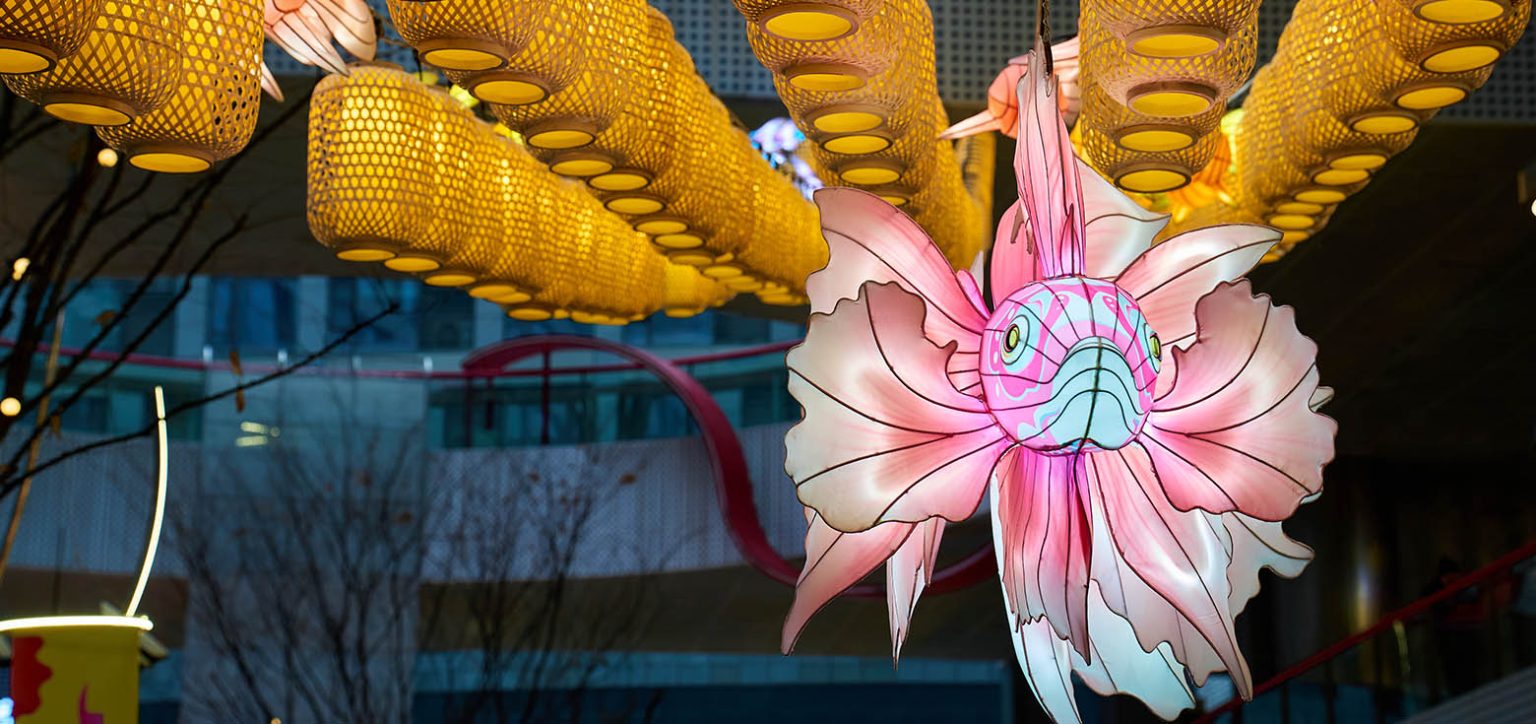
The Historical Development of Fish Lanterns
1. Origins (Han Dynasty to Tang Dynasty)
Han Dynasty (206 BCE–220 CE):
Fish lanterns trace their origins to ancient fish worship rituals. People believed fish possessed spiritual power to communicate with river deities, using them in sacrifices to pray for favorable weather and abundant harvests .
Tang Dynasty (618–907 CE):
With the rise of Lantern Festival celebrations, fish-shaped lanterns became iconic decorations, often paired with dragon lanterns to symbolize “a fish leaping over the dragon gate” (鱼跃龙门), representing social mobility and success .
2. Evolution (Song to Ming-Qing Dynasties)
Song Dynasty (960–1279 CE):
Craftsmanship matured, and “fish lantern dancing” (舞鱼灯) emerged as a folk custom, particularly thriving in Jiangnan water towns. Performances integrated military formation patterns from historical legends .
Ming-Qing Dynasties (1368–1912):
Fish lanterns became essential for Spring Festival and Lantern Festival, diversifying into regional schools like Huizhou-style (Anhui) and Zigong colored lanterns (Sichuan). Xi County Annals (《歙县志》) document Wangmantian Village’s 600-year-old Fish Lantern Festival, preserving traditional bamboo-and-paper crafting techniques to this day .
3. Modern Revitalization (20th Century–Present)
Early 20th Century:
Though still a rural tradition, wars and social upheaval pushed some regional styles (e.g., Zhejiang’s stone lanterns) toward near extinction .
21st Century:
China’s Intangible Cultural Heritage (ICH) protection policies revived the craft. Innovations include LED lighting, mechanical kinetic structures, and lightweight synthetic materials .
Contemporary Innovations:
Digital projections and AR interactivity reimagined fish lanterns, exemplified by the Forbidden City’s “Lantern Night” digital exhibition (2019), where holographic fish swam across ancient palace walls .
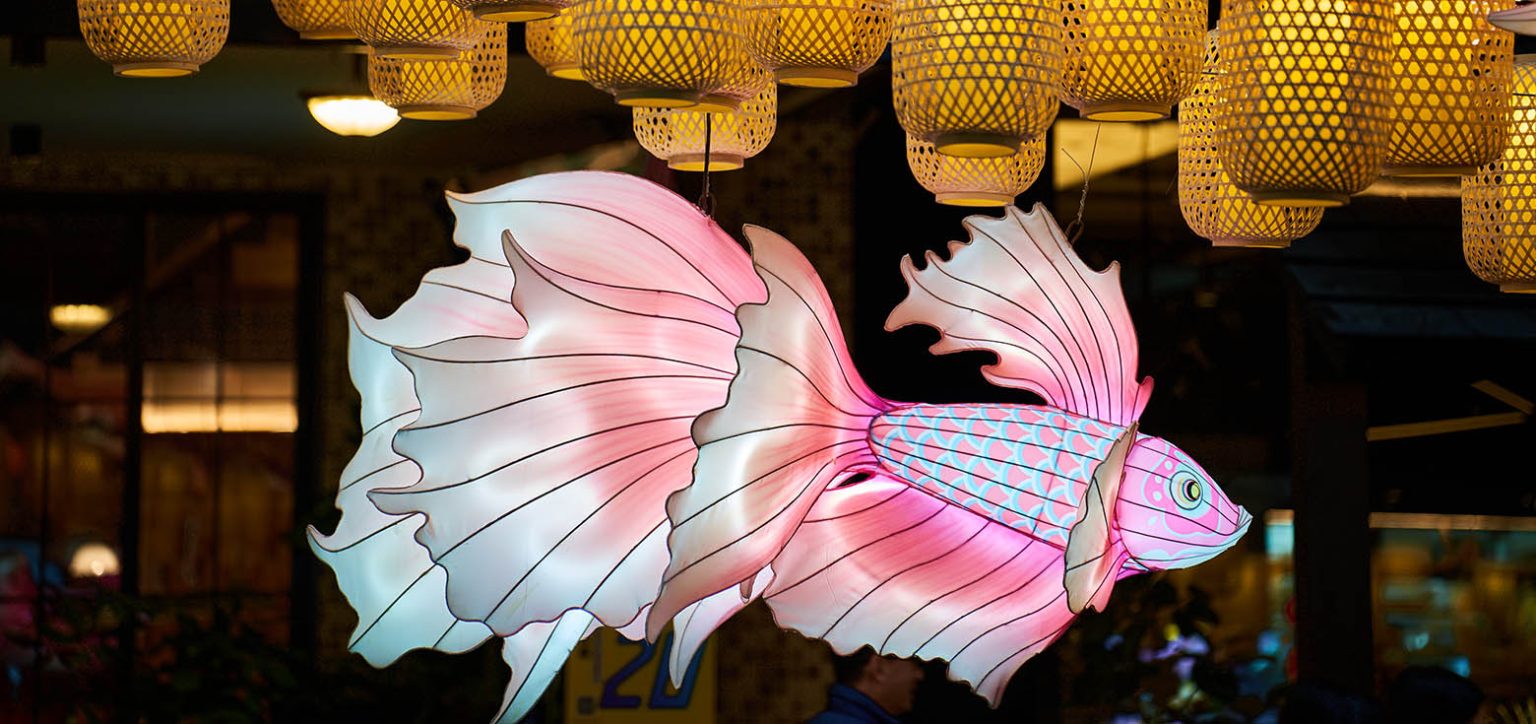
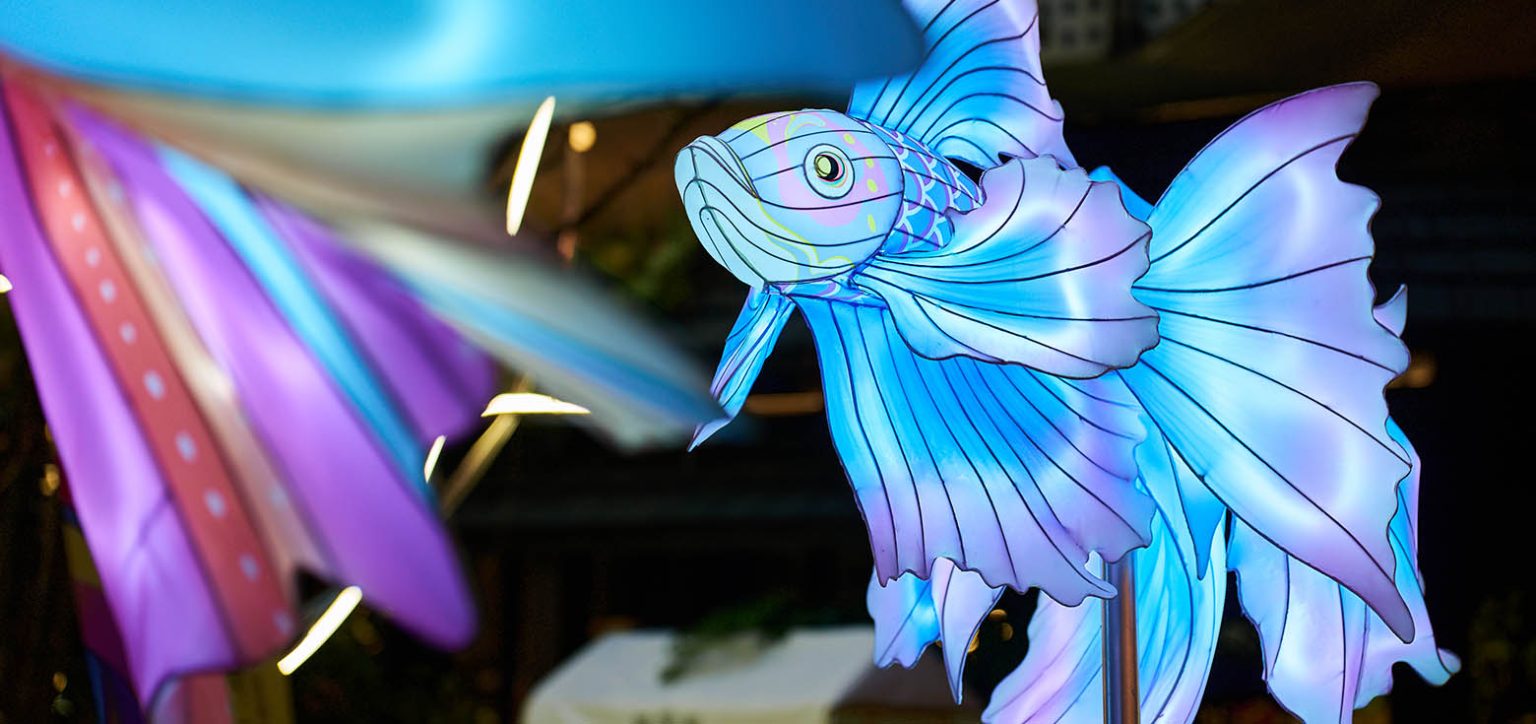
The cultural symbol of Chinese fish lanterns
1. Auspicious Symbolism
Abundance year after year: The homophonic association between “fish” (鱼) and “surplus” (余) embodies wishes for harvest and prosperity.
Numerous offspring and family prosperity: Fish’s high fertility symbolizes thriving lineages (common in wedding lantern displays).
Warding off evil spirits and protecting homes: Ancient beliefs held that fish lanterns, especially red ones, could repel mythical beasts like “Nian.”
2. Spiritual Significance
“A carp leaping over the dragon gate”: Historically motivated scholars pursuing imperial exams; modernly signifies breakthroughs in career or personal growth.
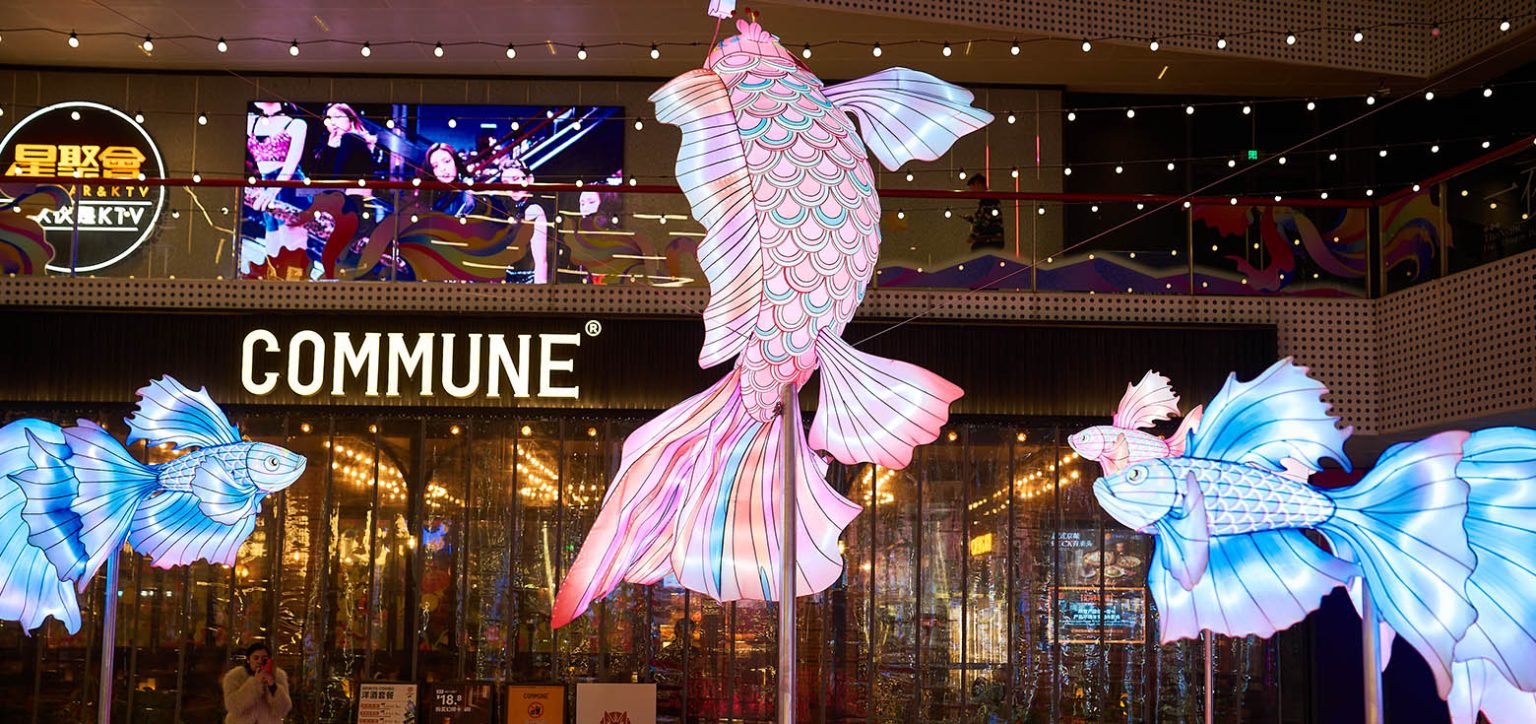
The manufacturing process of red fish lanterns
Traditional Materials and Process
Framework: Bamboo strips bent and tied into fish-shaped frames, segmented into head, body, and tail sections for flexible movement.
Skin Application: Rice paper or silk fabric stretched over the frame, hand-painted with scales and eyes using mineral pigments.
Embellishments: Decorative elements like colored tassels attached to the tail for enhanced fluidity during performances; auspicious patterns (e.g., lotus flowers) painted with gold powder.
Light Source: Candles secured in iron holders at the abdomen, with wax drippings for stability.
Modern Innovations
In recent years, while honoring traditional craftsmanship, Chinese lantern makers have embraced innovative adaptations. Fragile paper has been replaced by synthetic cloth, significantly improving weather resistance and durability. Battery-powered LED lights now substitute candles, eliminating fire hazards while enabling dynamic color transitions and energy efficiency. Bamboo frameworks have given way to lightweight steel wires, enhancing structural resilience and portability for larger installations. Additionally, motorized components introduce kinetic “swimming” effects, particularly in immersive displays, merging ancient symbolism with contemporary technology.
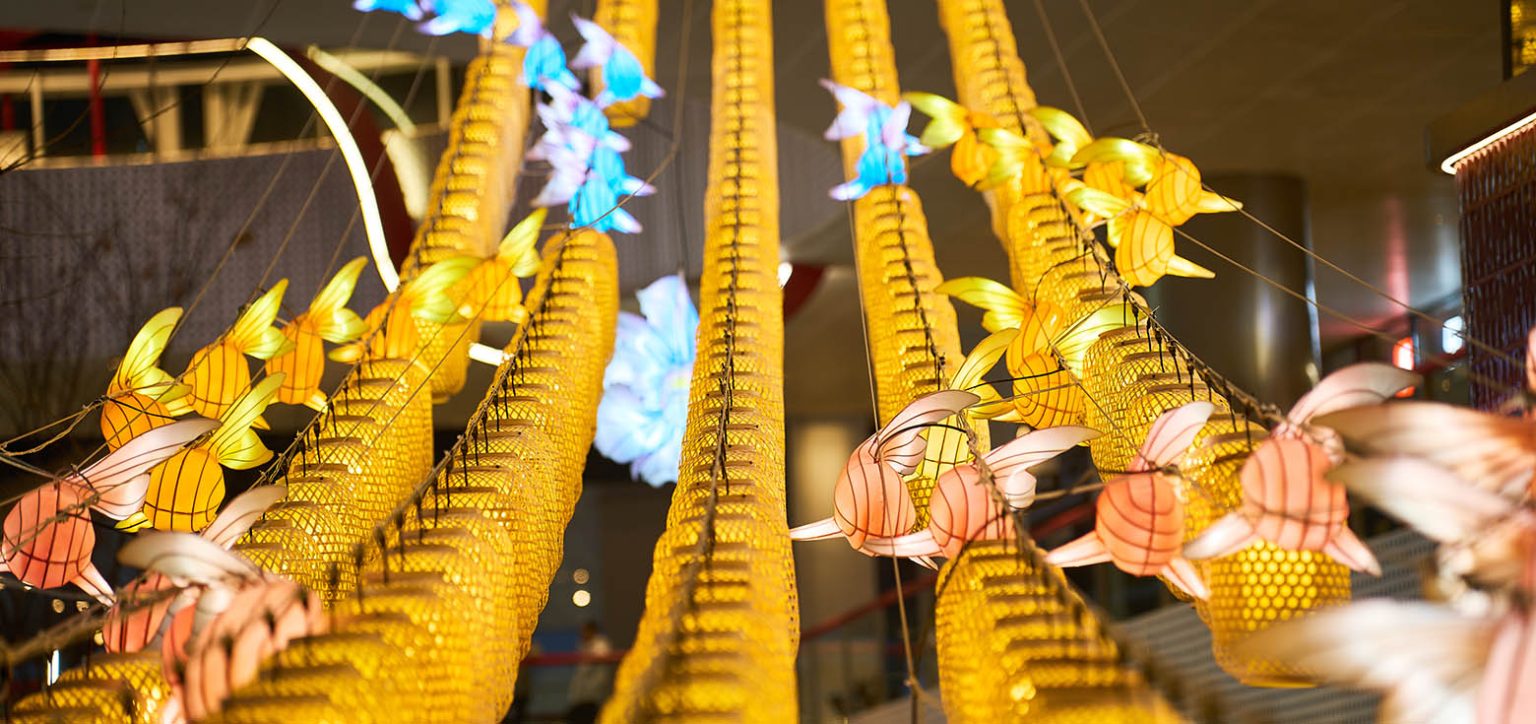
Regional characteristics and folk activities
Chinese Fish Lanterns as Unique Folk Art
Mainland China
Anhui She County:
Features: Giant bamboo fish lanterns (3-10 meters), requiring collective maneuvering.
Customs: “Fish Lantern Festival” from Jan 13-16 (lunar calendar), parading through alleys and villages.
Zhejiang Xianju:
Features: “Boneless lantern” technique, achieving glass-like translucency.
Customs: Temple fairs display “pierced-pattern fish lanterns,” recognized as intangible cultural heritage.
Guangdong Foshan:
Features: Adorned with Cantonese embroidery and sequins for dazzling effects.
Customs: Featured in Spring “Xing Tongji” ritual for fortune and prosperity.
Japan (Goldfish Lanterns / Koinobori):
Goldfish Lanterns: Paper lanterns shaped like goldfish at summer festivals (e.g., Kyoto’s “Gozan Okuribi”), symbolizing summer coolness.
Koinobori: Fabric carp streamers flown during May’s “Children’s Day,” symbolizing children’s courageous growth like “a carp leaping over the dragon gate” .
Korea (Deungbul / Lantern Raft):
Fish-shaped lanterns in Buddhist “Lotus Lantern Festival,” representing “eyes of wisdom,” floated alongside lotus lanterns on water .
Vietnam (Đèn cá chép):
Children carry carp lanterns during Mid-Autumn Festivals, inspired by the legend of “carp transforming into a dragon”—similar to traditions in southern China.
Thailand (Loy Krathong):
While primarily featuring lotus-shaped floats, some regions incorporate fish-shaped adornments to symbolize river vitality .
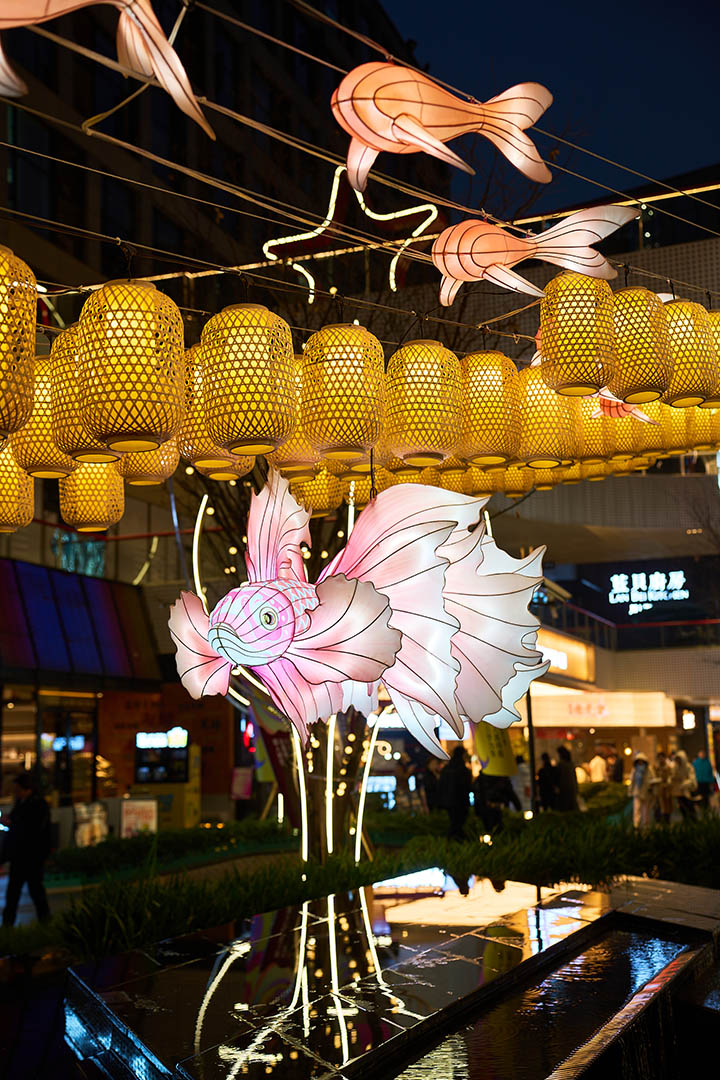
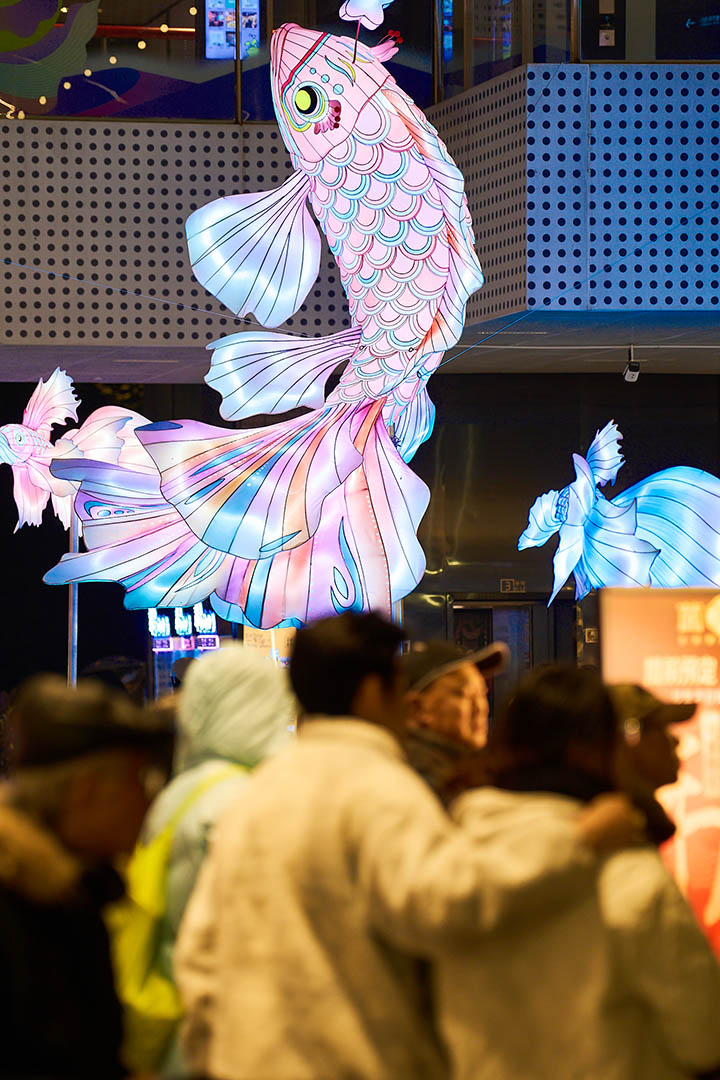
Application Scenarios of Modern Fish Lanterns
1. Cultural Tourism Night Experiences
Wuzhou Water Theater: Hundreds of LED fish lanterns float on water surfaces, creating dreamlike nocturnal landscapes.
Zigong Lantern Festival: Mechanical fish lantern clusters synchronize with sound and light effects to animate the “carp leaping over the dragon gate” dynamic scene.
2. Artistic Installations
Palace Museum’s “Lantern Night”: Digital projections transform palace walls into flowing schools of fish lanterns.
teamLab Exhibition: Interactive projection fish lanterns alter movement trajectories when touched by viewers, merging technology with participatory art.
3. Commercial Applications
Mall Decoration: Fish lantern matrices suspended during Chinese New Year attract crowds for photo opportunities (e.g., Shanghai Yuyuan Garden Lantern Show).
Brand Collaborations: The Palace Museum launches blind-box fish lantern collectibles; fashion brands integrate fish lantern motifs into apparel designs.
Customize your exclusive traditional Chinese lantern
Traditional Chinese lanterns—such as fish-shaped lanterns, dragon lanterns, and China sky lanterns—originally symbolized joy and reunion during festivals like the Spring Festival and Lantern Festival. However, with the integration of modern art and technology, these luminous artworks have transcended seasonal boundaries. Today, they illuminate urban landscapes year-round, enhance commercial spaces, anchor cultural tourism projects, and grace international stages.
FOREST PAINTING LANTERN Artisans invites you to commission bespoke Chinese lanterns that embody millennia of craftsmanship. We are dedicated to bringing traditional Chinese artistry to the global stage, allowing the world to discover the unique charm of these cultural treasures.
ask us
anything
where can I buy Chinese lantern?
Whether you’re planning a large or small-scale Lantern Festival celebration, Mid-Autumn Festival display, themed holiday lantern event, urban lighting project, or commercial district light sculpture installation—contact us via the details on the right or bottom of the page.
At FOREST PAINTING LANTERN Factory, we don’t just craft diverse fish lanterns—we can create any lantern artwork you envision!
The symbolic meaning of Chinese fish lanterns
Chinese fish lanterns are a profound cultural symbol with five core meanings rooted in tradition and folklore:
Annual abundance (年年有余) — In Chinese, “fish” (鱼) is homophonic to “surplus” (余), symbolizing prosperity and bountiful harvests
Fertility and blessings (多子多福) — Fish lay numerous eggs, representing thriving offspring and family prosperity
Warding off evil and attracting luck (驱邪纳吉) — Fish scales resemble ancient coins, symbolizing protection against evil and ushering in good fortune
Joyous reunion (喜庆团圆) — Fish often swim in schools, hence fish lanterns appear in clusters during festivals, embodying family unity and festive spiri
Leaping over the Dragon Gate (跃龙门) — Inspired by the legend “A carp leaping over the Dragon Gate,” symbolizing perseverance, success, and upward mobility.





